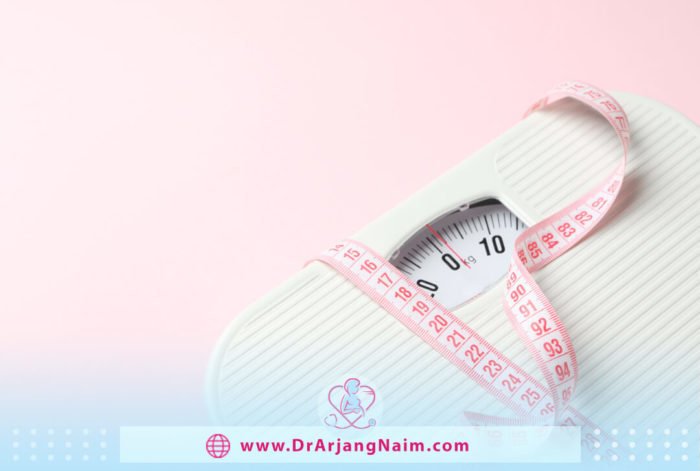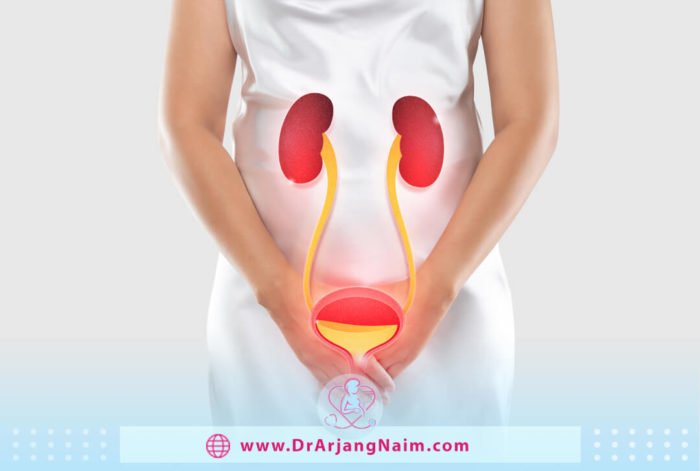Urinary incontinence occurs when a person loses control of his bladder. In some cases, the contents of the bladder may be empty. In other cases, they may experience only minor leaks. Depending on the cause, the disease may be temporary or chronic. With age, the muscles that support the bladder become weak, which can lead to urinary incontinence. Many different health problems can also cause this disease. Symptoms can range from mild to severe and can be a sign of cancer, kidney stones, infection, or an enlarged prostate.
What is incontinence?
Urinary incontinence is a condition that affects the lives of many people. When urinary incontinence occurs, a person may experience bladder control problems and leakage of urine. This leak is often uncontrollable and can negatively affect a person’s life.
The urinary system is made up of the kidneys, ureter, bladder, and urethra. These parts do several things in the body. They filter, store and remove waste products from the body. The kidneys act as the body’s filters. The kidneys excrete waste in the blood, and urine is produced. Urine then travels down through two thin tubes called the ureter.
The ureters attach to the bladder, where urine collects until it leaves the body. The bladder is like a storage tank; when the bladder is full, the brain signals that it is time to urinate. Urine is then expelled from the bladder as the muscle (sphincter) opens, allowing urine to pass freely through the urethra.
When this system works smoothly, the person usually has time to go to the bathroom before needing to urinate and does not experience any urine leakage. Urinary incontinence occurs when these parts do not function properly, which can occur for a variety of reasons throughout life. Many people think that incontinence is a natural part of the aging process that cannot be prevented; while there is a fact that the risk of urinary incontinence increases with age, but there are treatments that help manage it.
Different types of incontinence
There are several different types of urinary incontinence. These types of causes have different characteristics and stimuli for urine leakage. Knowing the type of incontinence is often an important part of an incontinence diagnosis and treatment program.
Urge incontinence
This type of incontinence is characterized by an urgent need to urinate urgently. Often, it happens very quickly, and the person leaks urine before reaching the toilet. Immediate incontinence can be caused by a condition called overactive bladder (OAB). Have OAB for various reasons, such as weak pelvic floor muscles, nerve damage, infection, low postmenopausal estrogen levels, or being overweight. Some medications and beverages, such as alcohol and caffeine, can also cause OAB.
Stress incontinence
When urine leaks during exercise, this is often called stress incontinence. In this type of incontinence, the pelvic floor muscles become weak and no longer support the pelvic organs as they should. This muscle weakness means that urine may leak accidentally as a person move around. For many people, leakage problems occur when they laugh, cough, sneeze, run, jump, or lift things.
These measures all put pressure on the bladder. Without the support of strong pelvic floor muscles, there is a greater chance of urine leakage. Women who have given birth are more prone to stress incontinence. Men who have had prostate surgery may experience stress incontinence.
Overflow incontinence
If the urine is not completely emptied after urinating, the person may experience incontinence. Think of the bladder as a container full of fruit juice. If a person spills only a small amount of fluid from the container, but not all of it, there is still a risk of spilling the rest as the person moves around. People with overflow incontinence never empty their bladder, so they are prone to leakage. This type of incontinence is more common in people with chronic diseases such as MS, stroke, or diabetes. It can also occur in men with large prostates.
Mixed incontinence
This type of incontinence is a combination of several problems that lead to leakage problems. It is often important to pay attention to what you do when dealing with leak problems with this type of incontinence. Diagnosing the cause of combined incontinence is usually the best way to manage it.
Symptoms of urinary incontinence
The main symptom is urine leakage, the time and manner of which depends on the type of urinary incontinence.
Stress incontinence
This is the most common type of urinary incontinence, especially in postmenopausal women. In this case, “stress” refers to physical stress instead of mental stress. The following actions may cause stress incontinence:
- Coughing, sneezing, or laughing
- Heavy lifting
- Exercise
Urge incontinence
The second most common type is urinary incontinence. There is a sudden and involuntary contraction of the bladder’s muscle wall that causes urination and cannot be stopped. The urge to urinate may be caused by:
- A sudden change in position
- The sound of running water
- Bladder muscles can be involuntarily active for a variety of reasons
- Sex, especially during orgasm
Overflow incontinence
This type is more common in men with prostate problems, a damaged bladder, or a blocked urethra. An enlarged prostate gland can block the bladder. The bladder cannot hold enough urine, or the bladder cannot be completely emptied, causing urine to leak in small amounts. Often, patients need frequent urination and may experience “dribbles” or dripping urine from the urethra.
Causes
Urinary incontinence can be caused by daily habits, underlying medical conditions, or physical problems. Careful evaluation by a physician can help determine the cause of incontinence.
Temporary urinary incontinence

Some drinks, foods, and medications may act as diuretics, increasing urine volume and stimulating the bladder. They are:
- Alcohol
- Caffeine
- Carbonated beverages and sparkling water
- Artificial sweeteners
- Foods that are high in spice, sugar, or acid, especially citrus fruits
- Heart and blood pressure medications, sedatives, and muscle relaxants
- Chocolate
- Chili peppers
- Large doses of vitamin C
Urinary incontinence may be caused by a medical condition that is easily treated, such as:
- Urinary tract infection: Infections can irritate the bladder, causing an urgent need for urine and sometimes urinary incontinence.
- Constipation: The rectum is located near the bladder, and many of them are common. Hard, compressed stools in the rectum cause these nerves to become overactive and increase the frequency of urination.
Persistent urinary incontinence

Urinary incontinence can also be a persistent illness, including:
- Pregnancy: Hormonal changes and fetal weight gain can lead to stress incontinence.
- Childbirth: Vaginal delivery can weaken the muscles needed to control the bladder and damage the bladder nerves and supporting tissue, leading to pelvic floor prolapse and incontinence.
- Changes with age: Increasing the age of the bladder muscle can reduce the capacity to store urine. Involuntary bladder contractions also increase with age.
- Menopause: After menopause, women produce less estrogen, a hormone that helps maintain bladder health. Problems in these tissues can exacerbate incontinence.
- Enlarged prostate: Especially in older men, urinary incontinence is often caused by an enlarged prostate gland, a condition known as benign prostatic hyperplasia.
- Prostate cancer: In men, incontinence can be associated with untreated prostate cancer. But most of the time, incontinence is a side effect of prostate cancer treatment.
- Obstruction: Tumors anywhere in the urinary tract can block the normal flow of urine and lead to incontinence. Urinary stones that form in the bladder sometimes cause urine to leak.
- Neurological disorders: Parkinson’s disease, multiple sclerosis, stroke, brain tumor, or spinal cord injury can interfere with neural signals associated with bladder control and cause urinary incontinence.
Risk factors
Factors that increase the risk include:
- Gender: Women are more prone to stress incontinence. Pregnancy, childbirth, menopause, and women’s natural anatomy are the reasons for the increase in incontinence.
- Age: With age, the muscles of the bladder and urethra lose some of their strength. Changes with age reduce the ability of the bladder to hold urine and increase the likelihood of involuntary urination.
- Being overweight: Being overweight puts pressure on the bladder and surrounding muscles, resulting in their weakness, which allows urine to come out when coughing or sneezing.
- Smoking: Smoking may increase the risk of urinary incontinence.
- Family history: If a close family member has urinary incontinence, the risk is higher.
- Some diseases: Neurological diseases or diabetes, may increase the risk of incontinence.
Prevention

Urinary incontinence is not always preventable, but the following strategies can be effective:
- Maintain a healthy weight
- Practice pelvic floor exercises
- Don’t smoke, or seek help to quit if you’re a smoker
- Avoid bladder irritants, such as caffeine, alcohol, and acidic foods
- Eat more fiber, which can prevent constipation, a cause of urinary incontinence
Diagnosis
Determining the type of urinary incontinence is very important, and the symptoms often help the doctor diagnose the type of incontinence. Depending on the type of incontinence, treatment measures are performed. Ways to diagnose include:
- A bladder diary: The person records the amount of drinking, the time of urination, the amount of urine produced, and the number of incontinence episodes.
- Physical exam: The doctor may examine your vagina and check the strength of your pelvic floor muscles. Also, they may check the rectum of a male patient to see if the prostate gland is enlarged.
- Urinalysis: Tests are performed to diagnose signs of infection and abnormalities.
- Blood test: Evaluates kidney function
- Postvoid residual (PVR) measurement: This method assesses the amount of urine left in the bladder after urination.
- Pelvic ultrasound: In pelvic ultrasound, the image presented may help to detect any abnormalities.
- Stress test: The patient is asked to apply sudden pressure while the doctor is looking to lose urine.
- Urodynamic testing: Urodynamic testing determines how much pressure the bladder and urinary sphincter muscles can withstand.
- Cystogram: X-ray provides an image of the bladder.
- Cystoscopy: A thin tube with a lens enters the urethra at the end so that the doctor can observe any abnormalities in the urinary tract.
Complications
Inability to retain urine can sometimes lead to embarrassment, discomfort, and sometimes other physical problems.
Skin problems
People with incontinence are more likely to have skin sores, rashes, and infections because the skin is moisturized most of the time.
Urinary tract infections
Prolonged use of a urinary catheter significantly increases the risk of infection.
Prolapse
Part of the vagina, bladder, and sometimes the urethra can fall into the entrance to the vagina. This is usually caused by the weakening of the pelvic floor muscles.
Treatment
Treatment depends on several factors, such as the type of incontinence, general health, age of the patient, and mental state.
Stress incontinence
Pelvic floor exercises, also known as Kegel exercises, help strengthen the urinary sphincter and pelvic floor muscles (muscles that help control urination).
Bladder training
Bladder training through:
- Delaying the event: The goal is to control urination. The patient learns how to delay urination whenever there is a will to do so.
- Double voiding: urinate then wait a few minutes, then urinate again.
- Toilet timetable: The person plans the bath at certain times during the day, for example, every 2 hours. Bladder training helps the patient gradually regain control of their bladder.
Medications
The following medications are prescribed to treat urinary incontinence:
- Anticholinergic drugs soothe overactive bladders and may help patients with immediate incontinence.
- Topical estrogen may strengthen the tissue in the urethra and vaginal area and reduce some of the symptoms.
- Imipramine (Tofranil) is a tricyclic antidepressant.
Medical devices
The following medical devices are designed for women, including:
- Urethral inserts: A woman inserts the device before activity and takes it out when she wants to urinate.
- Pessary: A tight ring that fits inside the vagina and is worn throughout the day. It helps keep the bladder up and prevent leakage.
- Radiofrequency therapy: The tissue heats up in the lower urinary tract. As it heals, it usually tightens and often leads to better urinary control.
- Botox: Botulinum toxin injected into the bladder muscle can help people with overactive bladder.
- Bulking agents: Injected into the tissue around the urethra, it helps keep the urethra closed.
- Sacral nerve stimulator: The sacral nerve stimulator is implanted under the skin of the buttocks. A wire connects it to a nerve that travels from the spinal cord to the bladder. This wire emits an electrical pulse that stimulates the nerve and helps control the bladder.
Surgery
If other treatments are not effective, surgery is an option. Women who are planning to have a baby should consult a doctor before deciding on surgical options.
Sling procedures
A mesh is placed under the neck of the bladder to help the urethra stop urine leakage.
Colposuspension
Raising the bladder neck can help relieve stress incontinence.
Artificial sphincter
An artificial sphincter or valve is inserted into the urethra to control urine flow from the bladder.
Absorbent pads and catheters
If medical treatments cannot eliminate incontinence, products that help reduce urine leakage can be tried. Included:
- Pads and protective garments
- Catheter
The bottom line
Urinary incontinence is one of the most common and often embarrassing problems. The severity of this condition varies from sudden urination when coughing or sneezing to an urgent need to urinate when the person does not have time to go to the toilet. Although urinary incontinence increases with age, this condition is not necessarily a consequence of aging.
Urinary incontinence is twice as common in women as in men. This may be due to pregnancy, childbirth, and menopause. Incontinence is not a natural component of aging and can be treated.
Additional questions
1. Can urinary incontinence be cured?
Urinary incontinence can occur in any person and its severity varies depending on the cause, age, and type of urinary incontinence. In most cases, incontinence can be treated or controlled.
2. What happens if incontinence is left untreated?
If left untreated, urinary incontinence can lead to decreased sleep quality, depression, anxiety, and loss of sexual interest.
3. How many times should pee a day?
Normally, each person urinates an average of 6 to 7 times during 24 hours. If a person urinates more than this amount, it means that they may drink a lot of fluids or consume a lot of caffeine, which is diuretic.
4. Is peeing every 30 minutes normal?
Frequent urination can occur as a habit. But it can be a sign of kidney or ureter problems, bladder problems or other conditions such as diabetes, pregnancy or prostate problems.
5. Can dehydration cause incontinence?
Dehydration from not drinking enough fluids can cause urine to concentrate. Concentrated salts can irritate the bladder and make incontinence worse.
References:
https://www.healthline.com/health/urinary-incontinence
https://www.medicalnewstoday.com/articles/165408#_noHeaderPrefixedContent
https://www.mayoclinic.org/diseases-conditions/urinary-incontinence/diagnosis-treatment/drc-20352814
https://www.womenshealth.gov/a-z-topics/urinary-incontinence
https://my.clevelandclinic.org/health/diseases/17596-urinary-incontinence#management-and-treatment
https://medlineplus.gov/urinaryincontinence.html
https://www.webmd.com/urinary-incontinence-oab/types-of-urinary-incontinence




